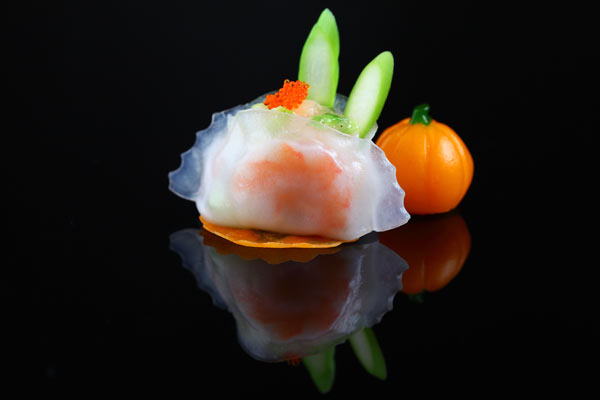


For those of us who grew up with Sunday family dim sum gatherings, the recollections are often bittersweet. While the food itself is often fondly recalled, the rude service, close quarters and incessant chatter from nearby tables usually mar the pleasant trip down memory lane.
Today, with so many choices for yum cha in five-star designer digs, it is now no longer such a tortuous endurance test every weekend. Yet the notion persists that truly delicious dim sum can only be found in old fashioned-read loud and shabby-dim sum parlors. No matter how nice the hotel may be, the food is often left wanting.
When Mandarin Oriental opened its first property in China, it naturally wanted a Chinese restaurant to set a standard for its other properties to follow. But that wasn't all.
Guangzhou has a reputation of being a place to conduct business: After all, many of the products produced in Guangdong province probably could trace their origins to a deal made over dim sum in a Guangzhou restaurant.
For Mandarin Oriental's Jiang by Chef Fei, New York-based Tony Chi worked his magic. One of the most respected international names in hotel and restaurant design, his signature look of East meets West is evident throughout. To facilitate business or family gatherings, more than half of the space is devoted to private dining rooms, each with ensuite powder room.
The broadloom carpet is a large print with stylized peonies in shades of sage, cream and slate blue, while furnishings are upholstered in leather trimmed with decorative gold nails upon dark wooden frames.
Of course, looks alone do not make a successful restaurant. To helm its kitchen, the hotel enlisted the expertise of Chaozhou-born Wang Kingfei, known as Chef Fei. His resume includes a stint as chef at Daye and as the executive director and chef for the Jiangshan Group.
The chef is a traditionalist, insisting on handpicking fish and seafood directly from Guangzhou's Huangsha Seafood Market in the morning so that his dishes are as fresh as possible. I was a little surprised to see sashimi on the menu, though, and can only surmise that it is a popular dish with locals.
To ward off the slightly chilly day, I scanned the double-boiled soup selections and settled on Royal Kung Fu with wild chicken, cordyceps and abalone to start.
The soup was artfully served from a clay teapot into tiny clay teacups. Its rich and hearty broth infused with the delicate flavors of the land and sea was nourishing yummy, and it was easily my favorite dish of the day.
We ordered a round of the usual suspects, with standouts being the har gau, seafood dumplings with asparagus, chicken feet with homemade sauce and pan-fried goose and radish puffs.
Har gau, which is available either in a traditional bamboo basket or in orchid soup, was wrapped in a paper-thin pastry to protect the firm and succulent shrimp within. The seafood dumpling was topped with slices of crisp asparagus and a dollop of orange roe for interesting textural contrasts. The deliciously gooey sauce with chicken feet was worth slurping down on its own.
Yet the hands-down show stopper was the goose and radish puff. Meticulously crafted to resemble miniature swans, each was covered in sesame seeds. It seemed a shame to ruin them, but they didn't exactly fit into my mouth with a single bite. The pastry was flaky, the radish was a perfect balance between sweet and savory, and the overall taste was pure satisfaction.
IF YOU GO
Jiang by Chef Fei
Mandarin Oriental Guangzhou, 389 Tianhe Lu (Road), Tianhe district, Guangzhou. 020-3808-8888.
Average cost per person for lunch: 300 yuan ($48).
Recommended: Royal Kung Fu Soup with Wild Chicken, Cordyceps and Abalone, Seafood Dumplings with Asparagus, Pan-fried Goose and Radish Puffs.
Copyright ©1999-2018
Chinanews.com. All rights reserved.
Reproduction in whole or in part without permission is prohibited.